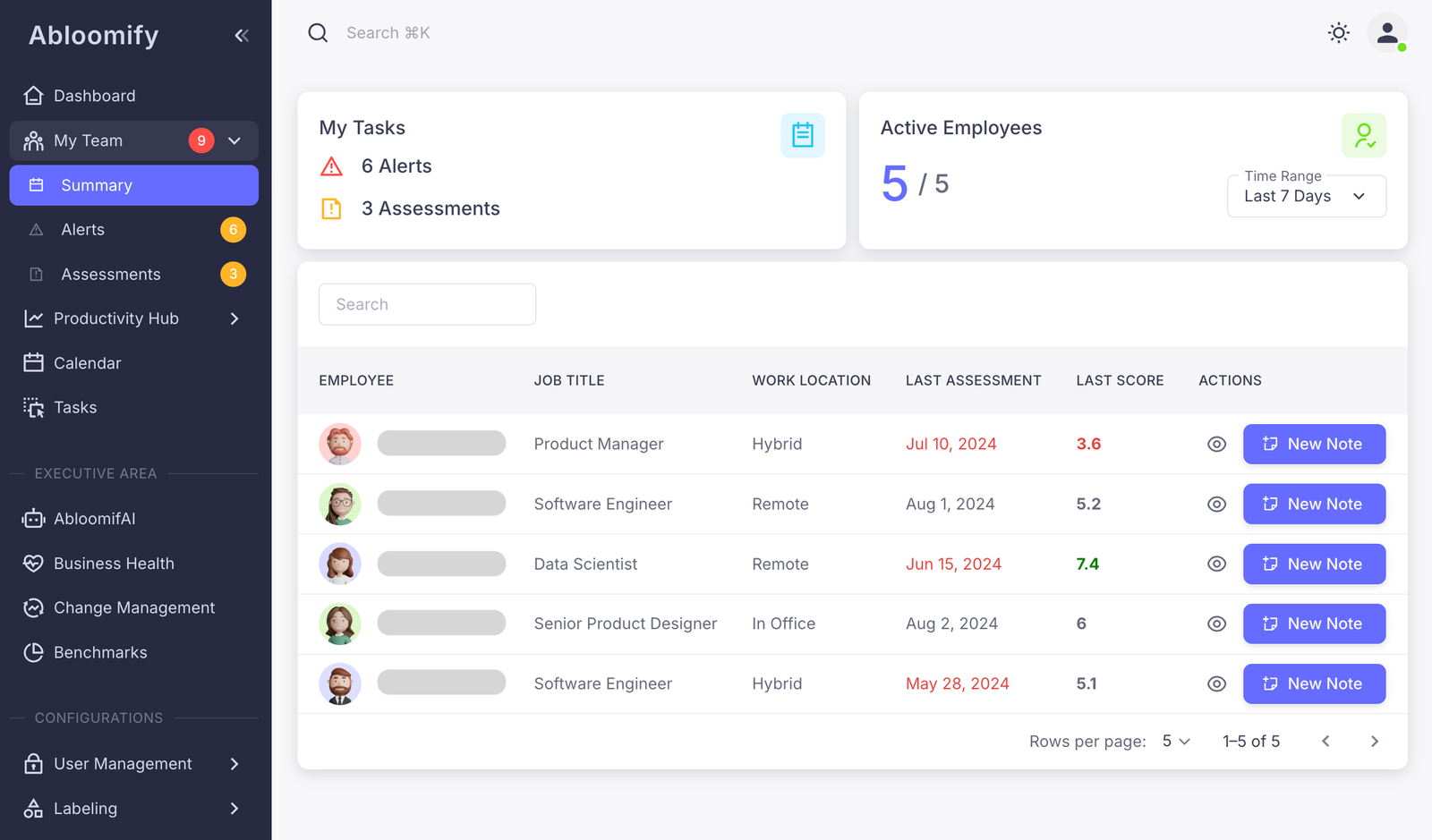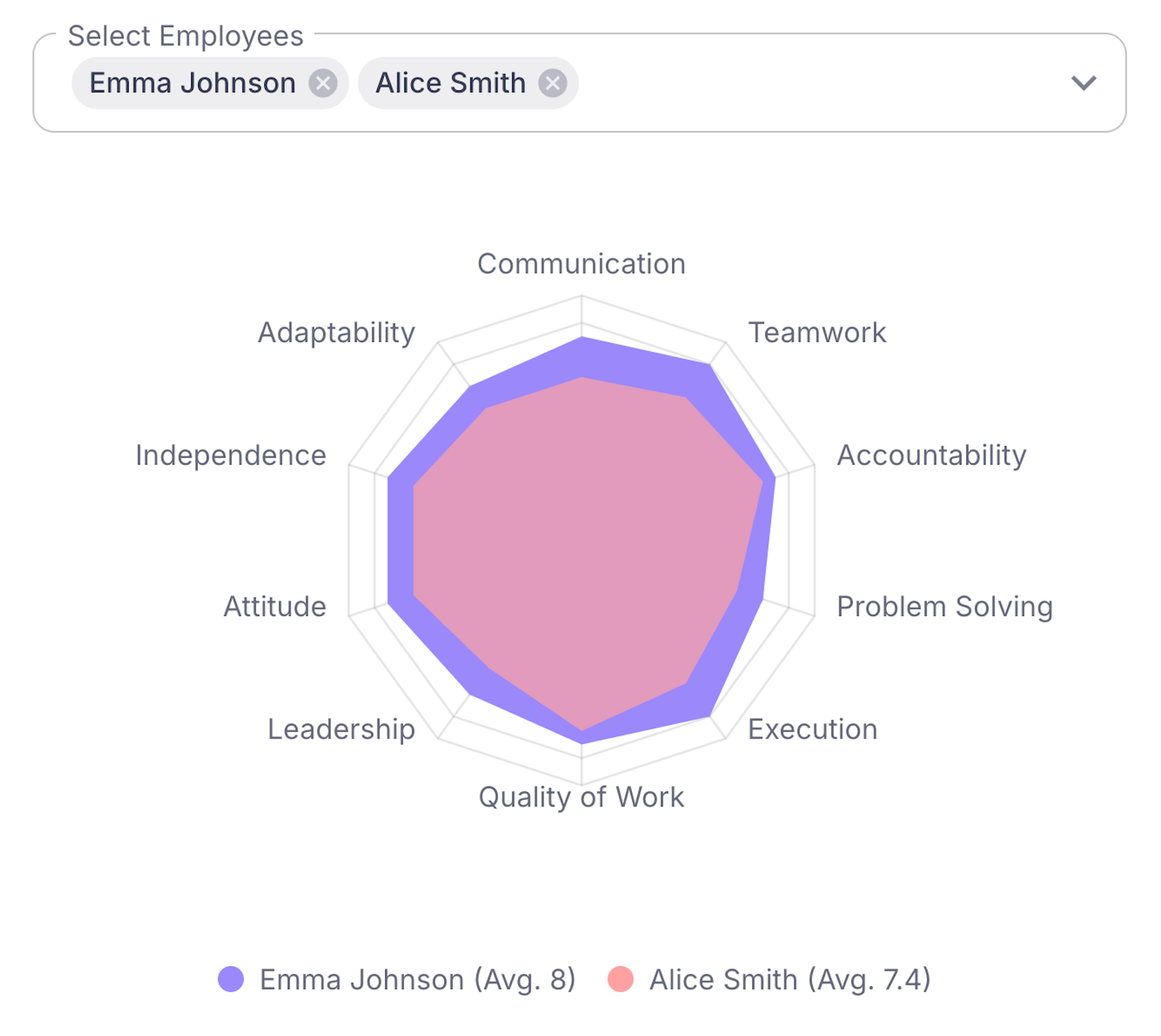Understanding how to manage for performance is crucial for achieving organizational success and sustainable growth. This article delves into strategic approaches and tools to enhance team productivity, offering insights into how technology companies can thrive using innovative workforce solutions.
Understanding the Foundations of Performance Management
Understanding performance management is vital for cultivating high-performing teams in the tech landscape. It requires more than just monitoring outputs; it focuses on the dynamics and objectives that fuel success. At its core, performance management involves aligning team efforts with organizational goals, ensuring everyone moves in the same direction.
Key elements for effective performance management include:
- Team Dynamics: Recognize the strengths, weaknesses, and interpersonal relationships within the team. Understanding these aspects can improve collaboration and efficiency.
- Clear Objectives: Setting specific, measurable goals is essential. It not only provides direction but also serves as a benchmark for measuring success.
Focusing on these foundational elements can transform how teams perform. Yet, that’s only part of the picture. Integrating performance management with broader organizational goals ensures that team progress contributes to larger aspirations, fostering growth and innovation.
Technology plays a pivotal role in this ecosystem. Advanced tools now help streamline processes and enhance productivity. For instance, AI-driven solutions can assist managers in achieving objectives by providing insights and predictive capabilities. These tools facilitate real-time tracking and analysis, supporting decision-making with data-driven precision.
Performance management isn’t just a task but a strategic approach to nurturing potential and aligning efforts. For more insights on enhancing team dynamics and achieving organizational goals, explore how modern performance management strategies can elevate your team’s productivity.
Utilizing AI for Continuous Performance Assessment
Artificial intelligence is transforming how teams are assessed, bringing efficiency and precision to performance management. AI tools enable continuous monitoring and evaluation, unlike traditional methods that rely on infrequent performance reviews.
The benefits of integrating AI into performance assessments are numerous:
- Real-Time Feedback: AI tools provide timely and actionable feedback, allowing employees to adjust their approach and improve their work continuously.
- Enhanced Productivity: Productivity alerts pinpoint areas where team members may need support, ensuring tasks align with business goals.
- Predictive Insights: With AI’s predictive capabilities, managers can identify trends such as potential burnout or disengagement early, facilitating proactive intervention.
- Data-Driven Decisions: Decisions are based on data, reducing biases and subjectiveness, leading to fairer evaluations.
Consider how these tools foster a culture of continuous improvement. By providing insights that highlight strengths and address areas needing enhancement, AI supports a high-performing team ethos. Managers can effectively utilize resources, while employees experience increased motivation through clear, understandable feedback.
Adopting AI for performance assessments is not just about technology integration. It’s about creating a responsive environment where performance evaluations are a part of day-to-day operations rather than periodic interruptions. For insights on boosting team productivity with AI, check out How to Improve Performance Management. This seamless integration of AI propels organizations toward sustainable success, ensuring teams are agile and well-equipped to handle evolving business landscapes.
Effective Workforce Planning for Optimal Resource Utilization
Effective workforce planning requires a fusion of strategic foresight and agile execution. It’s about finding the sweet spot where goals align with resources. Capacity planning is your blueprint here. It involves forecasting the workforce needed for impending projects. By predicting demand, you can ensure you have the right people in place without overwhelming your team.
Workload balancing, another critical piece, aims to distribute tasks evenly across your team. It minimizes stress and maximizes output by ensuring each team member works within their capacity.
AI-driven insights revolutionize these processes. They offer precise data on employee performance and potential, aiding in both capacity planning and succession strategies. Think of AI as your crystal ball, predicting shifts in workforce needs and identifying skills gaps before they become problematic. It’s particularly useful in evolving work environments like hybrid models, providing real-time data to make informed decisions.
Flexible work environments require adaptability. Here, AI tools play an instrumental role in maintaining balance and productivity. They help gauge team performance and adjust workflows for optimal output.
Effective workforce management ensures your team is not only equipped but also motivated to meet evolving business demands. Learn more about how transforming performance management strategies can enhance these aims. Embracing data-driven insights and flexible tools enables leaders to harness the full potential of their teams, aligning resources with strategic goals seamlessly.
Implementing a Robust Performance Management Framework
In the tech industry, a robust performance management framework is crucial. It sets the foundation for sustainable growth by aligning individual goals with organizational objectives. Key components of a framework include standardized assessments and AI-powered career path planning. These elements ensure objectivity and precision in evaluating employee performance and potential.
Standardized assessments provide a consistent method to evaluate skills and capabilities. They help identify areas needing improvement or further development. This process not only highlights individual achievements but also brings to light growth opportunities. By employing uniform criteria, companies can effectively compare performances across departments.
AI-powered career path planning is another game-changer. Leveraging AI, companies can map out tailored career trajectories for employees. This technology analyzes current skill sets and predicts future industry trends to recommend personalized growth paths. As a result, employees are motivated and engaged knowing they have a clear, achievable pathway to advancement.
Benefits of a structured performance management framework include:
- Promoting continuous learning and development
- Encouraging self-improvement through constructive feedback
- Improving retention rates by showcasing career growth opportunities
Employee retention is enhanced as top talent sees a commitment to their development. Continuous improvement is nurtured through clear, actionable feedback. Therefore, implementing such a framework is not a one-time effort but a continuous process supporting both individual and organizational advancement. Learn more about the impact of performance management in the digital era here.
Navigating Change Management with Technology Optimization
Incorporating new technology into your organization is more than just an upgrade. It’s about optimizing for performance and achieving sustainable growth. To succeed in change management, consider a technology optimization framework. This approach assesses the impact on team productivity and looks into license usage to help reduce costs.
Start by evaluating the new technology’s influence on productivity. Identify existing workflows and how the new system enhances or disrupts them. Focus on both short-term adjustments and long-term gains.
Use analytics to review the cost-effectiveness of new software. License usage analysis is crucial. It helps uncover underutilized licenses, allowing you to cut costs and allocate resources more efficiently.
Here are key steps to effectively manage organizational change:
- Gather comprehensive feedback from all stakeholders to understand user experience and potential roadblocks.
- Conduct thorough training sessions to ensure all team members are proficient with the new tools.
- Leverage analytics platforms that offer robust insights into productivity trends. This data-driven approach can highlight areas for improvement and assess technology integration.
Utilizing platforms that deliver in-depth analytics can be effective for this kind of optimization. They integrate with existing systems, providing seamless access to valuable insights. Robust analytics pave the way for aligning new tools with organizational goals. For more on optimizing team performance, explore strategies in modern workplaces. This path leads to sustainable growth by ensuring each technological change is a step forward in unleashing team potential.
Maintaining Privacy and Building Employee Trust
A pivotal element of managing for performance lies in maintaining privacy while building trust among employees. Companies increasingly turn to privacy-first technology solutions to safeguard trust, especially with performance tracking. Rather than resorting to intrusive methods, businesses should consider aggregate insights. This approach respects individual privacy and aligns with a commitment to building a transparent workplace culture.
Privacy-first solutions emphasize safeguarding personal data. When businesses collect data, presenting it in aggregate form ensures anonymity and engenders trust. Employees are more likely to engage honestly when they know their privacy remains intact. Here’s why privacy-focused solutions are crucial:
- Trust Building: Employees feel valued and respected when they know their data isn’t sold or misused.
- Cultural Alignment: Preserving privacy nurtures an environment of integrity, supporting open communication.
- Enhanced Engagement: Transparency in data use encourages employees to provide genuine feedback, improving performance metrics.
Providing clear communication about how data is used further cements this trust. Establishing simple, consistent policies ensures everyone understands their role in maintaining a secure work environment.
Moreover, privacy-centric practices promote better cooperation and a sense of belonging. Employees are more likely to support company goals when they trust that leadership protects their interests, leading to sustained engagement and productivity.
Explore how companies are using privacy-conscious performance management as a framework for achieving organizational success. By prioritizing employee privacy, organizations not only align with ethical standards but also enhance the authenticity of performance data, fostering an empowered, transparent workforce.
Enhancing Team Dynamics with Technology-Driven Solutions
Team dynamics in the tech spectrum can make or break an organization. In a world where teams are often scattered across time zones, harnessing technology to bridge distances and refine communication is essential. This is where innovative solutions step in to streamline decision-making and amplify team efficiency.
Integrating technology offers powerful insights to enhance team dynamics. Many organizations are now utilizing platforms that offer:
- Streamlined Decision-Making: By using a single source for data analytics, teams can reduce decision paralysis. Access to real-time data ensures faster and more informed decisions.
- Coaching Recommendations: AI-assisted coaching helps identify areas where teams or individuals may benefit from additional development. Personalized insights from data analytics can drive impactful mentorship.
- Enhanced Communication Tools: Advanced chat platforms and video conferencing solutions ensure seamless communication, allowing team members to stay connected regardless of their location.
- AI-Driven Recommendations: Artificial intelligence learns from team interactions, suggesting best practices to improve productivity and collaboration.
These technology-driven solutions offer an edge by transforming how teams work together, ensuring clarity, reducing redundancies, and optimizing workflows. Organizations can embrace the latest trends in performance management for the digital era to empower their teams.
Incorporating these solutions is more than a trend. It’s a strategic approach for businesses aiming to cultivate a culture of efficiency and continuous improvement, setting the stage for sustained success.
Driving Sustainable Growth through Strategic Management
Effective performance management is the secret sauce for sustainable growth in the tech world. By strategically managing performance, companies unlock the potential for innovation and growth. Performance management, when done right, is a continuous cycle that strengthens organizational capability and boosts employee morale.
Here’s how strategic management fuels sustainable growth:
- Data-Driven Decisions: Leveraging analytics helps leaders make informed decisions. By understanding performance metrics, organizations can allocate resources efficiently and focus on core areas that drive growth.
- AI-Powered Platforms: Utilizing AI tools transforms performance management. These platforms offer insights that enhance productivity, streamline processes, and foster a culture of continuous improvement.
- Employee Engagement: When employees have clear performance objectives and receive regular feedback, engagement levels soar. This enhances both productivity and retention rates, key factors in sustainable growth.
- Adaptive Leadership: Leaders are empowered to guide their teams effectively. By aligning performance goals with company strategies, leaders ensure each team contribution directly supports business objectives.
Implementing platforms that harness AI not only streamlines these processes but also creates an environment where data-driven decisions become the norm. For organizations eager to enhance their performance management, investing in AI-powered solutions is not just an option—it’s a necessity. Such platforms help cultivate a growth-oriented culture, equipping teams with tools for success. Explore how performance management strategies can impact the success of an organization by delving deeper into resources like this performance management impact guide. Interested in personalized solutions? Contact Abloomify for more details.
Final words
Strategic performance management is vital for sustainability and success in tech companies. Leveraging tools like Abloomify empowers leaders with insights, enabling them to build high-performing teams, optimize resources, and nurture a positive work environment. Explore Abloomify’s tailored solutions to meet contemporary challenges, streamline operations, and achieve your organizational goals.



